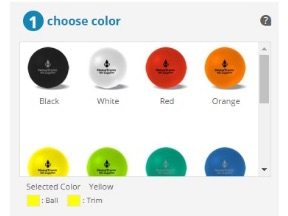Integrating a B2B company’s ecommerce site with internal systems can streamline operations and simplify customers’ buying experiences. Integrations offer significant benefits, but they are often difficult to get right.
One of the most common B2B data integrations connects a company’s ecommerce function to its ERP software — “enterprise resource planning,” the principal operations system, including manufacturing, fulfillment, shipping, customer data, and accounting.
In this article, I’ll review four tips to ensure your ERP integration — or any other B2B ecommerce integration — is a success.
1. Define Data to be Integrated
It is important to know what data to include in the integration, what the source of the data is, where it will be sent to, and how often it will be updated.
Here is a list of common data integration points. You may choose to integrate some of these initially and add others over time.
- Online orders: Ecommerce to ERP. As transactions are placed via your ecommerce site, this integration will bring the order into your ERP system. This is the most common integration point and will allow you to fulfill orders more efficiently. This integration typically includes customer data from the order, the specific items that have been ordered, and the shipping method.
- Offline orders: ERP to ecommerce. This integration will allow customers to see orders that they placed outside of the ecommerce site. This is often left out of initial integration projects, and typically falls in the nice-to-have versus must-have category. But it is a good way to build a relationship with your B2B customer.
- Product data: ERP to ecommerce. Product data integrations can allow you to display on an ecommerce site what products are in stock and how quickly they would ship. It can display a public price for products, product weight, and other attribute data, such as color and dimensions.
- Customer data: ERP to ecommerce. Integrating customer data can include contract pricing, to allow buyers to purchase at their specific price. Customers may have products that are not available to the general public. They may desire to place orders via purchase order, if not on a credit hold (which can be managed via an integration).
- Shipping and tracking information. The shipping date, the carrier, method, and tracking number can be integrated to allow customers to know when to expect their order.
Additional B2B integration complexities can include:
- Backorders;
- Editing an order after it was placed;
- Multiple warehouses.
These additional items should be planned for in the integration requirements.
In some instances, companies will use functionality from the ERP for ecommerce — such as calculating shipping costs and sales tax. Retrieving ERP information in real time is more process intensive, and it has risks. It can cause page load times in the ecommerce checkout to be slow as calls are made to the ERP server. Moreover, if the ERP server goes does, or communication with the ERP software is disrupted, users cannot complete their purchase.
2. Map Customer Registration Workflow
In the world of B2B, a customer’s registration is often critical. Data integrations can affect the registration process. Prior to any integration, map out the registration workflow for a new customer, one who has not placed an order online.
Consider these questions.
- If a buyer comes to your ecommerce site and has never ordered online but her company purchases offline, how do you connect this person to her offline account? Will she be able to place an order immediately?
- If a buyer comes to your site from an entirely new company — one that has not ordered online or offline — what is necessary to create an account? Will he be able to order immediately?
You may allow buyers to use information they know — such as their account number and billing zip code — to link to their offline account. Or you may require a customer service representative to approve the buyer’s account request. Regardless, to obtain the most orders, make the process as simple as possible for the buyer.
3. Build a Data Migration Plan
In many cases, for new integrations there are initial, necessary, one-time data-migration steps.
Examples include:
- Loading product data, ensuring that all products on the ecommerce site have a valid SKU that matches the ERP;
- Migrating users from a previous ecommerce site, if the integration is being completed at the same time as a re-platform;
- Mapping existing ecommerce users to ERP accounts.
List the initial data to be migrated and develop a plan for when and how it will be done.
4. Plan for Failure
No matter how well you plan, sometimes data does not reach its destination correctly. A well-designed integration addresses the risk of failure.
How will the ecommerce site function if the ERP system goes down for an extended period? If it does go down, can the site run independently for 24 hours, and then data is updated when the ERP system comes back online?
What if the ERP system is up and running but, say, a shipping tracking number is not in the ecommerce database? How will you troubleshoot what went wrong? An event log can review errors, to track down possible issues. You may want to set up alerts to email specific individuals for a certain type of error.
Integration Success
With clarity around your integration requirements, the customer registration workflow, your data migration plan, and how you will troubleshoot and handle system downtime, you have the foundational elements for a successful data integration for your B2B ecommerce site.




